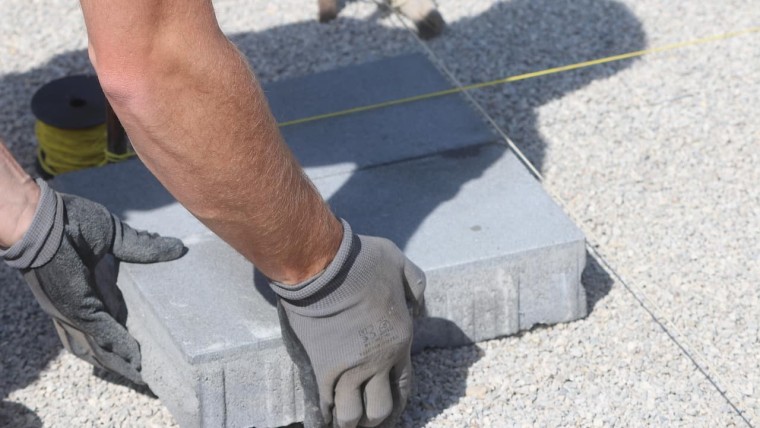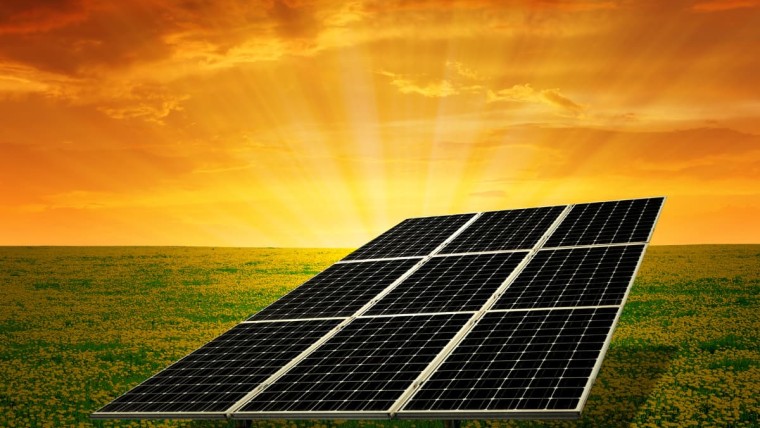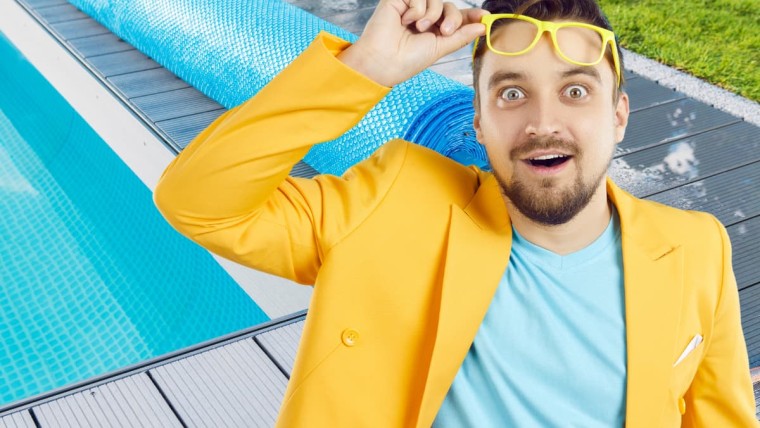Let's go into a little more detail about the consumption of the heat pump
A little reminder about the heat pump
General operation of a heat pump
The heat pump is a machine electric. It uses electrical energy provided by the electricity supplier, in order to run its refrigeration circuit and thus "pump" calories into the natural environment. It is based on the same thermodynamic principle as the refrigerator, and uses a compressor, an expansion valve, a condenser and an evaporator.
NB: if you are in France, Belgiumor Switzerland you can receive 3 free quotes with the tool below.
There are two major consumers of electrical energy in a heat pump:
- First of all the compressor of the heat pump. It is the engine of the refrigeration cycle that allows you to have heating. It needs electricity to operate.
- Then the electric heating element. Be careful with the latter. Indeed, many heat pumps are equipped with it to avoid extreme cold. Because a heat pump captures less energy when temperatures are cold. If it only intervenes in case of emergency everything is fine, and it will only slightly increase the bill at the end of the year depending on your region, which is more or less cold.
There are also the fan and other elements such as valves, or pumps. But their power consumption is low overall.
The different types of heat pumps
There are 4 main families of heat pumps for home heating:
- Aerothermal or air/water heat pumps: They draw calories from the outside air, in order to "send them back", by means of a refrigeration system, to the water network of the house.
- Water-to-water heat pumps: They draw calories from a natural water source (a lake for example) and redistribute this energy to your domestic water system.
- Geothermal or ground/water heat pumps: They take the calories from the earth through a geothermal probe in your garden (between 50 and 200m deep or more depending on the power needed). Then, always by the same principle, the heat arrives in your water network thanks to a condenser which exchanges the energy.
- Air-to-air heat pumps: these units that we hang on the wall. Rather unadvised for heating because not very efficient. They take energy from the air outside with their external unit, and send it back into the air in the room.
Each of these types of heat pumps has a different operation and performance, which necessarily affect consumption. For example, aqua thermal heat pumps (water/water) naturally have excellent performance, while air/air pumps are rather poor for heating.
In practice, this is observed by a higher or lower COP for each machine. As a reminder, the COP or coefficient of performance is the ratio between the heating energy production in kWh and the electricity consumption in kWh. Here are the orders of ideas of COP :
- PAC Air air: COP = 2 to 3 (1kWh of electricity consumed = 2 or 3 kWh produced to heat you)
- PAC Air Water : COP = 3 to 4
- PAC Sol Eau : COP = 4 to 5+.
- PAC Eau Eau : COP = 5 to 7+.
If you were previously on pure electric heating, you can roughly divide your old bill by the COP value to get an estimate of your new consumption with a heat pump.
Electricity consumption plays an important role in the calculation of the final price of a heat pump in Switzerlandor in France. It represents costs that will impact the duration of the return on investment.
To know more how much the CAP will consumewe can use several approximation methods that are all equal.
Heat pump consumption from power input
The principle is simple For example, the heat pump has a power consumption of 2.2 kW, as in the Yutaki Combi S 11 kW.

It is known that on average a heat pump operates :
2300 hours at more than 800m altitude to ensure heating alone.
2500 hours at more than 800m altitude to ensure heating and hot water.
2000 hours at less than 800m of altitude to ensure the heating alone.
And finally 2300 hours also at less than 800m of altitude to ensure the heating and the domestic hot water.
So we just need to multiply the power input in kW by the average operating hours in Hours.
If we live at less than 800m altitude and the heat pump provides heating and hot water then: 2.2kW x 2300 hours = 5060KWh (Kilowatt hours) will be the electrical consumption of our heat pump. This example is valid for underfloor heating since we have considered the power absorbed at 35°C water outlet as indicated on the sheet above.
Let's say that the price of the kWh is 16cts €: your bill will be around 810€ per year, or 68€ per month.
This cost can be compared to previous consumption. However, this should not be the only decision criteria.
Do the math with this heat pump electricity consumption calculator to get an estimate of your future electricity consumption.
Power consumption calculator
The consumption of a heat pump using the COP
With this approximation method, the idea is to calculate the consumption of previous years with your old heating system. We are in the case of an energy renovation.
For the example we imagine a previous gas consumption of 2000m3 of gas per year for heating and hot water. These 2000m3 of gas are in fact equivalent to 22'000kWh of electricity because the calorific value of gas is about 11. It is therefore the intrinsic need for heating and hot water for the building in question.
However, the manufacturers give values of coefficient of performance (COP) on their technical data sheets. Let's say we have a COP of 3.5
This means that the heat pump draws 3.5 times more renewable energy (air, water or soil) than it does from the electrical grid.
So if we divide these 22'000kWh by these 3.5 we get the approximate final consumption of the heat pump: 6285kWh in this case.
This would mean a bill, with a cost of 16 cts € per kWh, of about 1000 € per year, or 84€ per year.
Average consumption and concrete examples
It is estimated that the average heating requirement varies according to the climate between 35 and 50 Watts per m3, if the insulation is correct. A house of 120m2 would thus have a heating power requirement varying between 4200W and 6000W. In the examples we consider that the house is heated by the floor (35°C water temperature).
Thus 2 examples of adapted PAC are :
- the Hitachi Yutaki Combi S 2.0 - 6kW
- The Atlantic Fujitsu Alféa Extensa Duo A.I. 6 R32 5.5kW
| Home | Device | COP A7/W35 | Pabsorbed A7/W35 | Conso* kWh/year | bill** € / year |
| House 120m2 | Yutaki Combi S 2.0 R32 | 5.25 | 0.82kW | 1886kWh / year | 301€ / year |
| House 120m2 | Alféa Extensa Duo AI 6 R32 | 4.65 | 1.18kW | 2714kWh / year | 434€ / year |
| House 200m2 | Alféa Extensa Duo AI 10 R32 | 4.5 | 2.11kW | 4853kWh / year | 776€ / year |
*2300 hours of operation of the heat pump, over the 8 months of heating
**16 cts € / kWh
To be verified in reality according to the situation of each one
Variables that influence the electrical consumption of the heat pump
- The first variable that influences the annual consumption is naturally the climate of the current year. If the winter is harsh and the season lasts, the heat pump will run a little longer. Instead of the average of 2300 hours, for example, we will then be in a year where it runs 2700 hours. This 20% variation will be directly reflected in the electric bill.
- Secondly, one of the variables that influences is the outlet water temperature of the heat pump. If you have a heater, it will probably be 35°C or less. This is ideal for most heat pumps. However, if you have radiators, then the outlet water temperature must be higher because their exchange surface is smaller. So the machine will run at a different speed to produce these higher temperatures, and the COP will be lower. Instead of 3.5 it will be for example 2.8. (Less COP = more consumption) This 20% variation will be paid directly by you to your electricity supplier.
- The intelligent design The size of the system also affects the heat pump's consumption. If, for example, one of the designers decided to install a buffer tank that was too large, the heat pump might be constantly running to try to heat this huge tank, and all for nothing. This is certainly part of the reason why there are certificates or other labels for heat pumps to ensure that the design is good. In France, you should use RGE or QualiPAC certified professionals. In Switzerland it is the GSP or PAC System Module certification.
- Finally we can talk about electrical resistancesIf they are not just for back-up, they can be turned on without you knowing it because of bad wiring or an installer who does not know the standards of the region. This can put your electrical costs into geostationary orbit.
The consumption of a heat pump according to the type
You may be wondering which type of heat pump to choose in order to heat you properly without consuming too much energy. Indeed, depending on the source from which you draw the energy, the efficiency is different and therefore the consumption varies.
Consumption of an air-to-air heat pump
Air is a medium with a lower thermal capacity than water, therefore the COP of air-to-air heat pumps are always lower than other heat pump models. It is best to avoid heating with an air-to-air heat pump, unless for financial reasons it is not worthwhile to install an air-to-water heat pump and you do not need heating often during the year.
Consumption of an air-water heat pump in kWh
The methods presented above allow you to find your consumption in kwh in a simple way. Use the power input, this is the easiest way. Air-water heat pumps are preferred because it is easier to transfer the heat to the water in the water system since water has a thermal capacity 4 times greater than air. So the COP are much better and the consumption is lower. However, we still draw heat from cold air in winter, which is not optimal. The ideal way to limit consumption is to have a source with a constant or little variable temperature.
Consumption of an air water heat pump for a 100m2 house
Let's take this common example in France of a house of about 100m2. The consumption depends on the model installed. Let's take a standard case of a 7kW heat pump with a COP of 3.5 on average which runs 2300 hours per year. 7 / 3.5 = 2kW absorbed on the electrical network, and that during 2300 hours, that is 4600kWh per year of consumption, which gives 800€ with a kWh at 0.174€, so 66€ per month and 2.2€ per day.
Consumption of a water-to-water heat pump
The ideal situation is that of heat pumps that draw their heat from water. Indeed, these sources have a much more stable temperature throughout the year (lake or river, or geothermal probe with glycol). To limit your consumption as much as possible it is the best, but on the other hand it is generally much more expensive. The COP can go up to 5 or 6, allowing you to produce 6 times more energy than you consume in electricity.
Consumption of a swimming pool heat pump
Heating a pool is a luxury far from any ecological consideration. It will be necessary to heat a large volume of water during several days to have your 28 degrees in the water. And it will be necessary to maintain, because the water will lose between 1 and 3°C per day. You will have to let the heat pump run, which will cost you about 500€ per year for a standard pool.
Here is a simulator of electrical consumption for swimming pools: http://www.jcg2.fr/piscine_bilan.php
Heat pump electricity consumption simulator: 3 tools
- The German heat pump manufacturer Watterkotte, acquired by NIBE in 2020, has a nice heat pump electricity consumption simulator for France : http://www.waterkotte.fr/calculez-votre-consommation/
- Here is another simulator of consumption of pac air water or other, in artisanal mode: http://nourtier.net/JoceWanadoo/Bricolage/PAC/calcul_PAC.htm
- And finally an easy to use calculator to find an estimate of your electricity consumption https://calculette.proxiserve.fr/calculette-economies-energie-PAC
The part of consumption that we don't talk about: to go further.
The gas boiler uses gas that is extracted from natural reserves and then transported to Europe.
The heat pump uses electricity from a production source. However, this production source also has its own output. This may be an oil-fired power station, a hydroelectric dam or a nuclear power station.
The overall performance of electricity generation is approximately 40%. Even if Some Siemens turbines, such as the SGT-8000H, are now achieving record efficiencies of over 60%.
Thus, when we say that a COP of 3.5 means 1kWh absorbed on the network for 3.5kWh of heating energy produced, it is not exact.
Since to produce this 1kWh we needed a power plant with an efficiency of 40%. This 1kWh costs in fact 1/0.4 or 2.5kWh so 2.5 times more.
Let's compare a heat pump and a gas boiler to see the absolute difference.
Let's take a heat pump with an average coefficient of performance of 3.5, and a gas boiler with an annual efficiency of 97%.
At maximum load, a A heat pump with a power of 10kW does not have a COP of 3.5 but rather of 2.3 so it will consume 10kW/2.3 = 4.34kW of electricity from the grid.
But to create these 4.34kW we needed 2.5 times more energy at the base: or 10.85kW of primary energy.
The gas boiler of the same power 10kW, with its efficiency of 95%would consume 10/0.95 or 10.52kW.
We see in this case and with the approximations of the values of COP (depends on the manufacturer), that the gas boiler consumes in absolute a little less than the heat pump.
However, it uses a fossil energy which is by definition exhaustible, whereas the heat pump uses in part air which is renewable.
Let's say that the electricity from the heat pump is produced in a power plant with a gas turbine, then in the end almost as much gas is burned on the side of the heat pump to produce the electricity as on the side of the gas boiler to play the role of fuel in the boiler.
It's just a question of the reference frame: for the boiler, everything is done on site, whereas for the heat pump, part of the energy transformation is done externally and is not really addressed.
These articles may also arouse your curiosity:
How much does the Daikin 16kW heat pump consume?
What is the CAP and how does it work?

Julien G.
Juliena mechanical engineering graduate and specialist in climate engineering since 2009, has become a writer specializing in renewable energies, with expertise in heat pumps and photovoltaic solar panels for individual housing.
See all articles by this author






